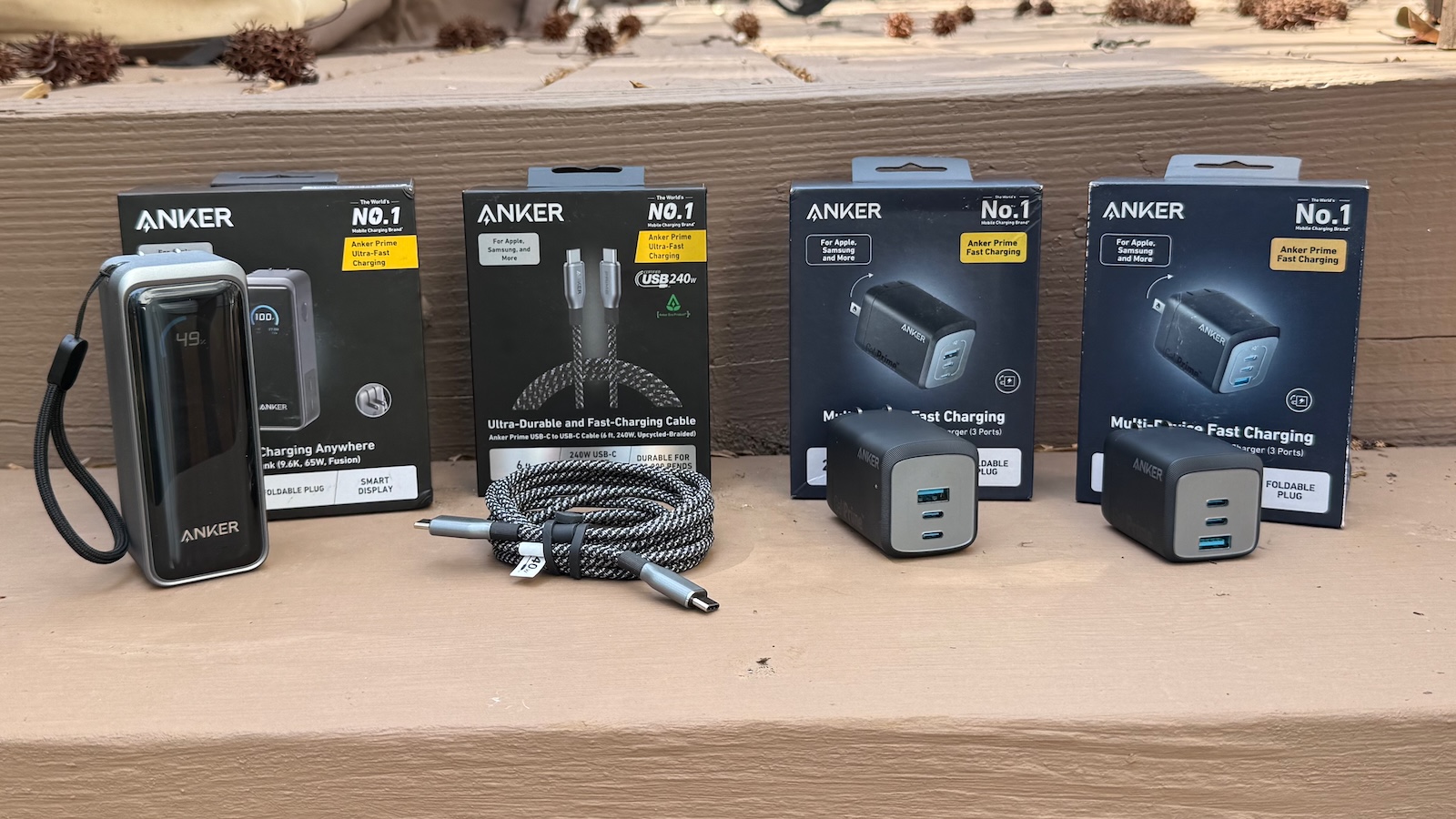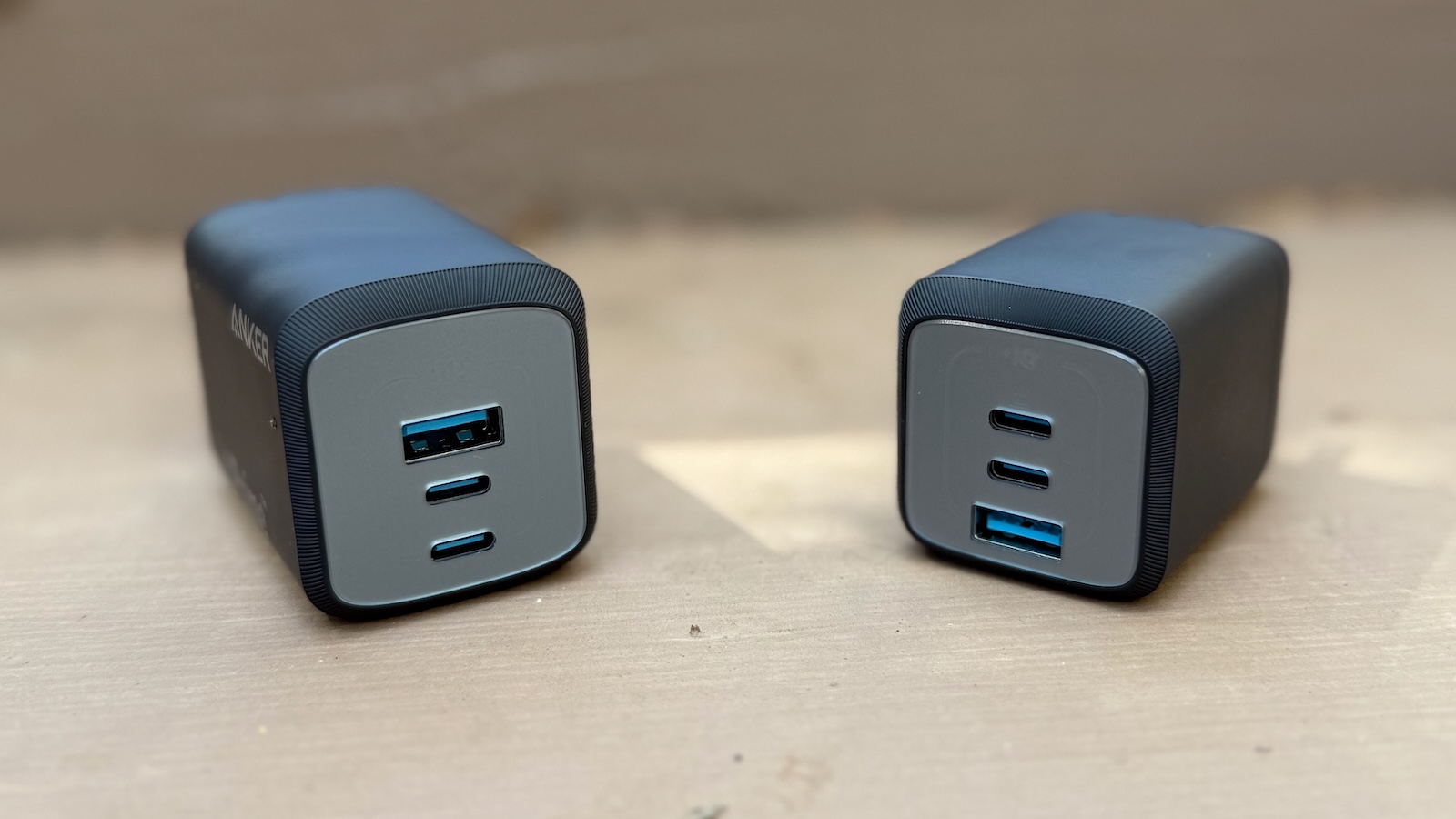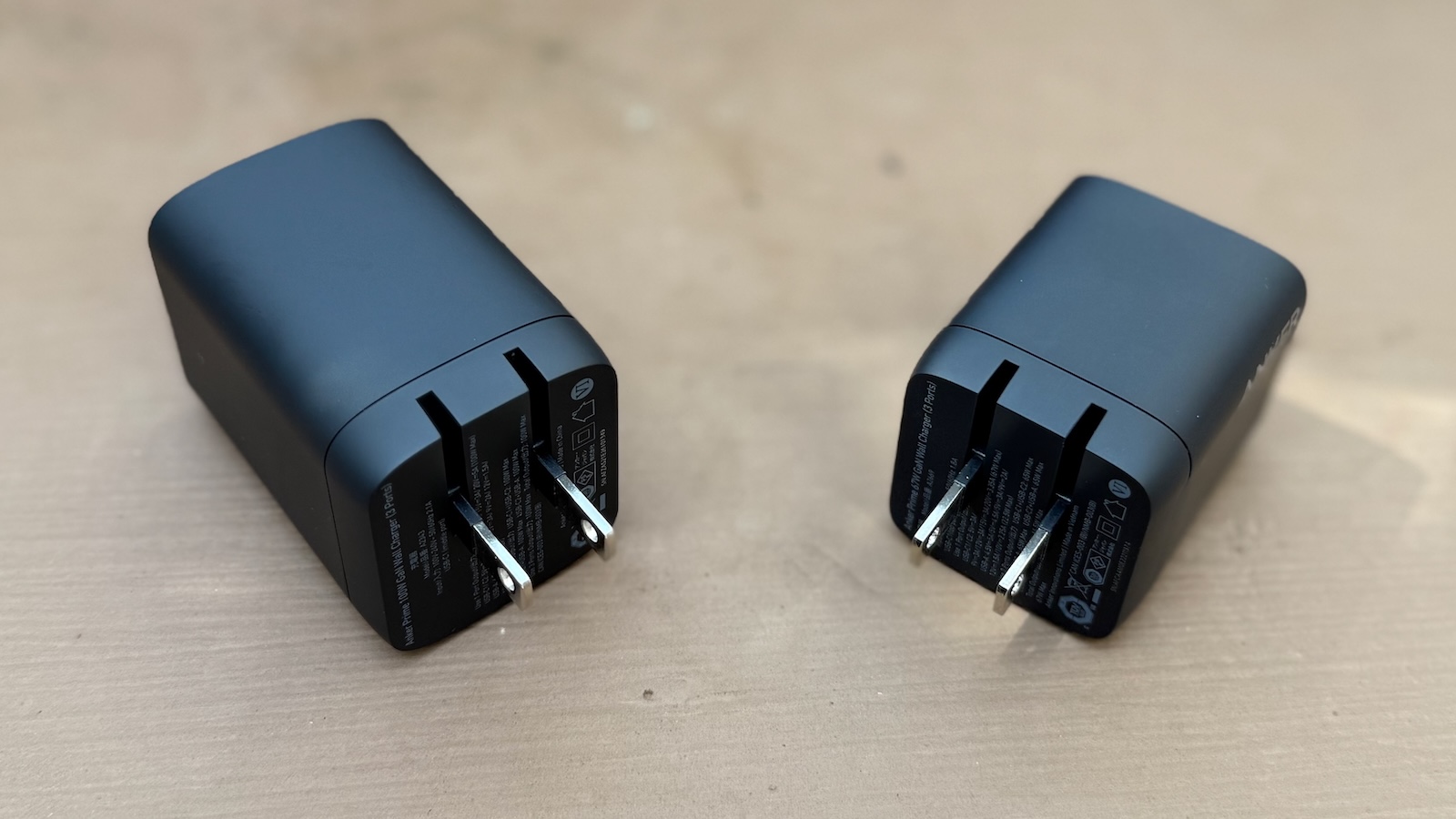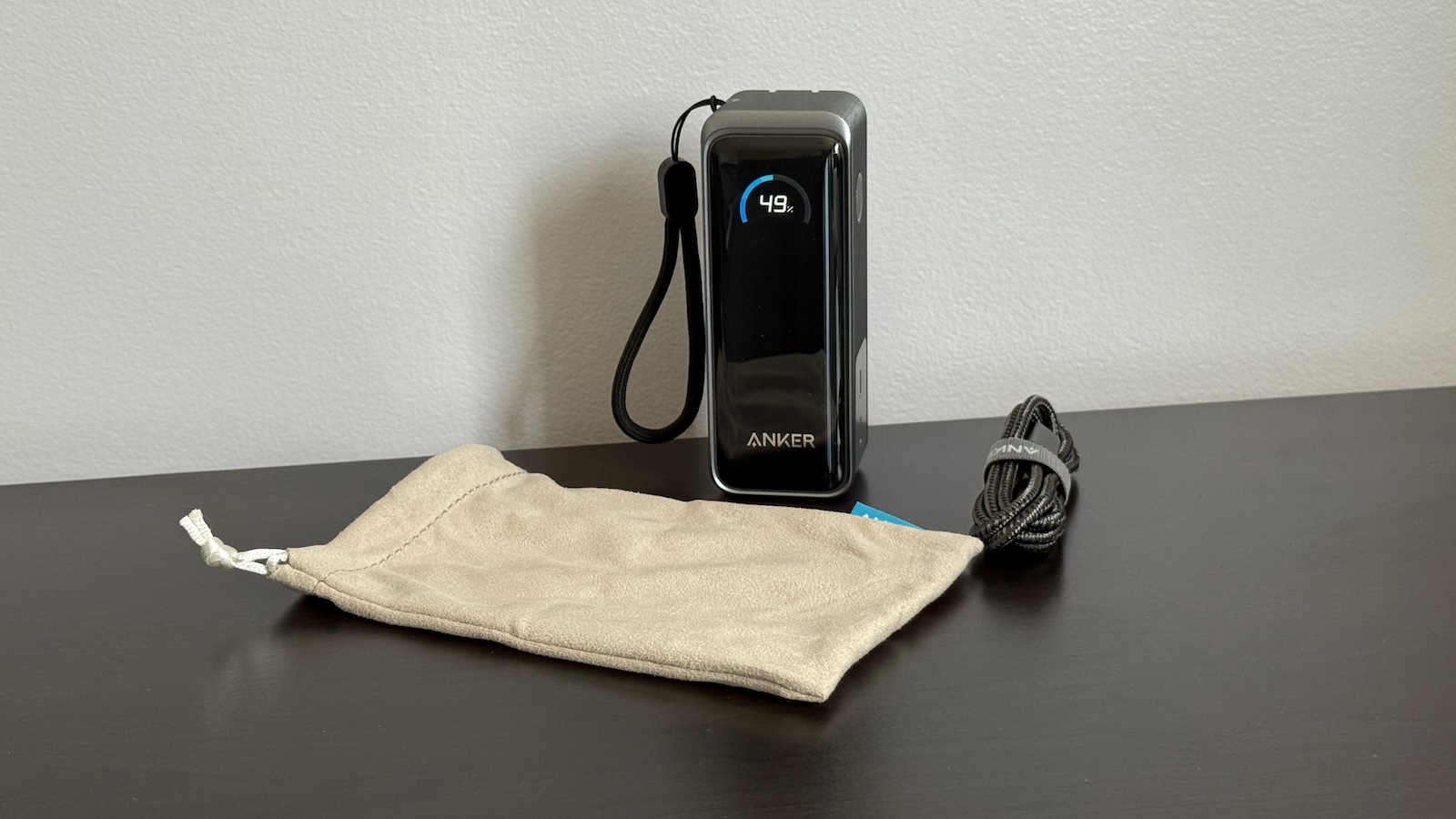
While Anker is known for a broad array of charging accessories, the Anker Prime family features some of the company's most advanced technology and feature sets to deliver a premium experience.

I've been testing out a few Anker Prime travel accessories over the past few months, including some of Anker's most compact yet powerful multi-port wall chargers, a multi-port power bank, and a high-end USB-C charging cable to help keep even Apple's most power-hungry products charged up.
Anker Prime Wall Chargers
First up are a pair of triple USB wall chargers in 67-watt and 100-watt varieties optimized for travel with folding prongs and GaN technology to ensure the most compact size possible. And while these chargers are surprisingly hefty for their size due to the density of the GaN technology packed inside, they definitely slip easily into a bag or even a large pocket.

Each of these chargers offers a pair of USB-C ports and a USB-A port to help keep all of your devices charged up, and they have nearly identical designs, with the main differences being their output power and thus their overall sizes.
The 67W version is 51% smaller than Apple's 67-watt adapter that has come with some MacBook Air and MacBook Pro models in recent years, measuring in at around 1.5 inches (~40 mm) square by 1.9 inches (50 mm) deep and weighing 4.78 ounces (135.7 grams).
It can deliver up to 67 watts of charging power when either of its two USB-C ports is used alone, while the USB-A port can deliver up to 22.5 watts on its own. When using two ports simultaneously in any combination, the charger will intelligently divide up to 65 watts of power between the two ports, and if all three ports are in use it will divide up to 64.5 watts accordingly. Of the two USB-C ports, the upper one is labeled with a computer icon while the lower one is labeled with a phone icon, indicating that the upper port will be prioritized for heavier loads when multiple ports are in use.
While 67 watts is enough for most Apple laptops other than the 16-inch MacBook Pro, the fact that this is a multi-port charger means you're probably buying it to charge multiple devices at the same time. That works if you're only trying to charge something like an iPad, iPhone, and Apple Watch, but anything more and you may start to bump up against the charger's wattage ceiling.
A MacBook Air drawing up to 35 watts is fine if you want to also charge an iPhone, for example, but if you're trying to charge a MacBook Pro and other devices simultaneously, you're going to need more power and that's where Anker's 100W model comes in.

The 100W model is unsurprisingly a bit larger and heavier than its sibling, measuring about 1.5 inches (39 mm) by 1.7 inches (44 mm) and about 2.3 inches (60 mm) deep and weighing 6.4 ounces (183.3 grams).
As with the 67W model, the 100W model includes two USB-C ports that are each capable of delivering the full wattage to a connected device if used in solo mode. The USB-A port can similarly deliver up to 22.5 watts on its own. In a two-device charging configuration involving both USB-C ports, the upper one will deliver up to 65 watts, while the lower one will deliver up to 35 watts, ideal for charging something like a MacBook and an iPad or iPhone simultaneously. Using either of the USB-C ports with the USB-A port will split the power 76 watts and 22.5 watts respectively.
If you need to charge three devices simultaneously, the upper USB-C port will provide up to 46 watts and the lower USB-C port will support up to 30 watts, with the USB-A port offering up to 22.5 watts.
None of these configurations will allow you to fast charge a 16-inch MacBook Pro, even if it's being charged on its own, but it should be largely sufficient for most users. Only if you're looking to charge multiple power-hungry devices will you likely want to look for something a bit more powerful, and therefore bulkier and probably more expensive. With the wide variety of chargers available on the market, it's always a balance of size/weight, power, and cost, so it's important to carefully weigh your priorities when considering a purchase.
The 67W model is normally priced at $59.99, but a $20 on-page coupon on Anker's site currently brings it down to $39.99, a deal that is also available at Amazon. The beefier 100W version is currently priced at $84.99 with no discounts available either on Anker's site or at Amazon, so you may want to keep your eye out for a sale if that's the one you're interested in.
Anker Prime 9.6K Power Bank
As a lower-power and cheaper alternative to the Alogic Ark Pro I recently reviewed, Anker's 9.6K Prime Power Bank is a handy multi-device charging solution for on the go. Its 9,600 mAh internal battery is only about a third the size of the Ark Pro's, so you won't be able to come close to fully charging something like a MacBook Pro and it can only deliver 65 watts of total charging power, but for smaller devices it could be a solid option for many users.

While the power bank is rated for 9,600 mAh of capacity, Anker notes that users should only expect about 65% of that to end up in the device being charged, due to various battery and circuitry inefficiencies. As a result, Anker says users should expect about 5,200 to 6,700 mAh to be delivered to a connected device, and that's about what I found in my testin... Click here to read rest of article
Article Link: Review: Anker's Prime Lineup of Travel Charging Accessories Delivers Advanced Tech in Small Packages
As an Amazon Associate, MacRumors earns a commission from qualifying purchases made through links in this post.

